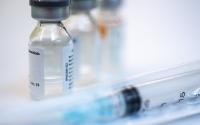[ad_1]
Table of Contents
High SARS-CoV-2 loads tied to B117 variant, potential super-spreaders
B117, a SARS-CoV-2 variant believed to have increased infectivity, is linked to high viral loads in COVID-19 patients in the United Kingdom, while a small number of patients with extremely high viral loads could have largely driven the second wave of the pandemic in Houston, according to two new studies in the Journal of Infectious Diseases.
In the first study, a team led by researchers from Public Health England tested 641 respiratory samples collected from COVID-19 patients from Oct 25 to Nov 25, 2020, for B117 viral loads. They found that those infected with the variant had up to 10,000-fold higher viral loads than those infected with other virus strains.
The authors said that although similar viral loads were observed in non-B117 samples, “the significantly higher number of subjects having an extreme viral load is of great concern.” They called for further research into the possibility that either high short-term viral load or a longer period of infectious viral emission during acute illness may also have a role in increasing the variant’s transmissibility.
First discovered in the United Kingdom in December 2020, B117 has spread rapidly throughout the country and to many other parts of the world, including the United States.
In the second study, researchers at Baylor College of Medicine, compared SARS-CoV-2 loads in 1,319 COVID-19 patients from Mar 18 to Aug 15, 2020, in Houston. In the second pandemic wave, a small number of patients had extremely high average viral loads, meaning that they could have been super-spreaders, or those who transmit the virus to a large number of other people—even though they are not sick or only mildly ill.
The potential super-spreaders were most likely to be otherwise healthy women who didn’t require hospitalization. The length of viral shedding was similar in patients with no symptoms and those with mild to moderate illness.
“Many were asymptomatic or had mild illness indicating that without appropriate viral detection, social distancing and quarantine, individuals who have extremely high or high viral load will be able to spread SARS-CoV-2 and sustain the current COVID-19 pandemic,” the authors wrote. “We believe that these individuals’ characteristics could be consistent with the super-spreader phenomenon and that greater awareness of the social dynamics of these individuals is needed to understand the spread of SARS-CoV-2.”
Feb 13 J Infect Dis UK study
Feb 15 J Infect Dis Houston study
CDC data: COVID vaccine-related anaphylaxis in less than 4 per million
Pfizer/BioNTech’s and Moderna’s mRNA COVID-19 vaccines have been associated with 4.7 cases of anaphylaxis per million doses and 2.5 cases per million, respectively, according to data published by Centers for Disease Control and Prevention scientists in JAMA late last week.
Sixty-six total cases have occurred in the United States through Jan 18, 2021, making the cumulative frequency 3.8 cases per million doses. No known deaths have been reported.
Anaphylaxis is a severe allergic reaction that can include swelling, hives, lowered blood pressure, and shock. Of the 66 people who experienced this outcome, 52 (78.8%) had prior allergies or allergic reactions and 21 (31.8%) had prior anaphylaxis events. Three-quarters occurred within 15 minutes of vaccine receipt.
The researchers say the clinical characteristics of anaphylaxis were similar between the two vaccines and whether the person had symptom onset within 30 minutes of being vaccinated or later. All 66 people received treatment in a healthcare setting, and 61 (92.4%) received epinephrine, 18 (27.3%) needed intensive care unit admission, and 7 (10.6%) needed endotracheal intubation.
The researchers used data from the Vaccine Adverse Event Reporting System (VAERS) from Dec 14, 2020, through Jan 18, 2021 (the first mRNA vaccine [Pfizer] received emergency-use authorization on Dec 11, 2020). During this time, 9,943,247 Pfizer/BioNTech doses and 7,581,429 Moderna doses were administered.
Feb 12 JAMA article
[ad_2]
Source link












